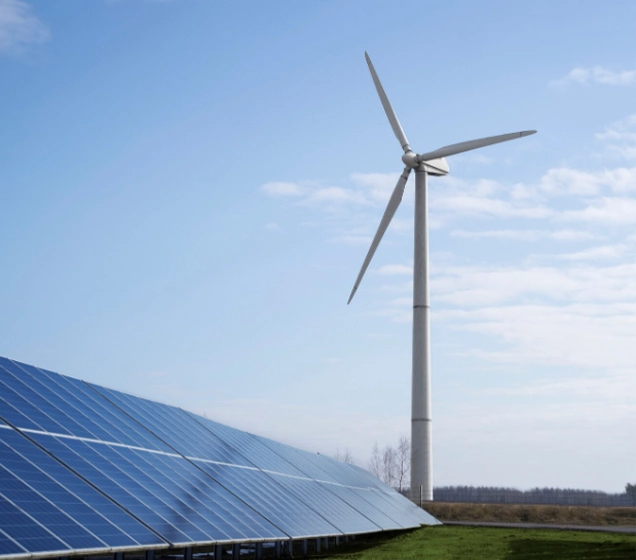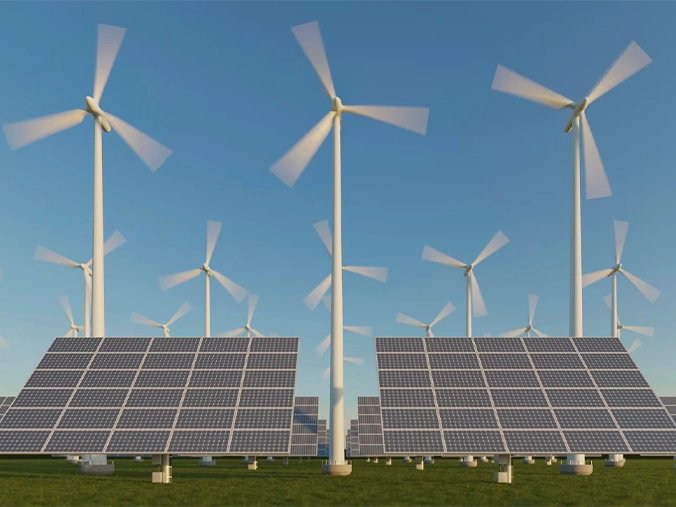What are renewable energy sources? The answer to this question is of great importance in environmentally conscious and sustainable energy production. Sources such as solar, wind, hydroelectric, biomass, and geothermal energy are types of energy that are constantly renewable in nature and do not pose a risk of depletion. Unlike fossil fuels, these sources enable energy production with minimal harm to the environment. The use of renewable energy plays a major role, especially in the fight against climate change.
“What are renewable energy sources?” question also shapes the energy policies of the future. Developed and developing countries are turning to these sources to reduce carbon emissions and ensure energy supply security. For example, thanks to solar panels and wind turbines, individuals and institutions can now produce their own energy. This provides both economic independence and supports environmental sustainability. In addition, renewable energy investments offer significant opportunities in terms of job creation and technological development.
What are Renewable Energy Sources?
With the rapid increase in energy demand today, interest in environmentally friendly solutions is also growing. The most important issue that stands out at this point is renewable energy sources. Renewable energy refers to energy types that are naturally replenished, inexhaustible, and do not harm the environment. Serious environmental problems such as pollution and climate change caused by fossil fuels have further increased the importance of these energy sources.
Renewable energy sources are one of the cornerstones of a sustainable future. Thanks to these sources, energy production does not harm the environment, which classifies them as clean energy. Unlike fossil fuels, these systems keep carbon emissions to a minimum and are compatible with natural cycles during energy production.
Renewable energy types can be listed as follows:
Obtained by converting sunlight into electricity or heat through panels. It is the most commonly used type of renewable energy.
Air flow is converted into electrical energy through wind turbines.
The kinetic energy of rivers is used to turn turbines and generate electricity.
Electricity is generated from the kinetic energy created by ocean waves.
Heat energy from deep within the earth’s crust is used.
Energy obtained from organic waste.

Today, numerous investments are being made worldwide toward energy conversion. Wind farms, solar farms, and biomass plants are becoming increasingly widespread, and energy storage technologies are also advancing. This transition is possible not only through large-scale projects but also through individual contributions. Solar panels used in homes, energy-efficient appliances, and a culture of recycling support this process.
Furthermore, every project assignment carried out in educational institutions increases students’ energy awareness and enables them to develop innovative ideas. This awareness will form the basis for long-term social transformation.
The choice of energy sources is a strategic decision that affects not only the present but also the future. It is inevitable to turn to renewable energy sources in order to produce energy without consuming our planet’s limited resources and harming the environment. In this process, both individual and social awareness are important. We must increase the use of renewable energy for a cleaner, more livable world and reduce our dependence on non-renewable resources.
What are Renewable and Non-Renewable Energy Sources?
As the demand for energy continues to grow rapidly, the source of this energy and its impact on nature have become important topics of discussion. Energy sources are generally divided into two categories: renewable and non-renewable. This distinction plays a critical role in terms of both environmental and economic sustainability. Especially in today’s world, where the effects of the climate crisis are increasingly being felt, energy policies are largely built around these types of resources.
Renewable energy sources are sources that can continuously renew themselves through natural processes and do not carry the risk of depletion. These sources do not harm the environment when used and enable clean energy production. Solar, wind, water, biomass, and geothermal energy fall into this group. Renewable energy, which is one of the cornerstones of sustainable development, also supports energy supply security.
On the other hand, non-renewable energy sources are resources that exist in limited quantities in nature and take millions of years to replenish once depleted. Fossil fuels (coal, oil, natural gas) are at the top of this group. The use of these fuels results in high greenhouse gas emissions, which accelerates global warming. In addition, their extraction, transportation, and use can cause serious damage to the environment.
Below are some of the basic characteristics of renewable and non-renewable energy sources:
In conclusion, minimizing environmental impacts in energy production and using resources efficiently are of great importance. Future energy systems should be planned based on renewable sources, and investments in this direction should be increased. This will directly affect not only the quality of life today but also that of future generations.



